How many times have you begun a campaign, or played in one, in which the players first meet at a tavern? How many published adventures begin this way? Quite a few begin this way right? But where in the Dungeon Master Guide does it tell you how to build one that the players will find memorable?
A whole lot of role playing goes on in such places. Yet most of us give little thought to how such a place should be built or populated. Taverns are more than just bars. They are often the local meeting place. They are sometimes the best (or only) place in town to buy a meal. And sometimes they are also the location of the local inn.
People go to such places to do more than just drink. Taverns are the place to hear the local gossip and news. A tavern might be the best place to find work. Adventurers might potential group members at one. Thieves might find potential marks in the local tavern. And one might find a lady of the evening at one. The local bards tell their stories and sing their songs in the tavern.
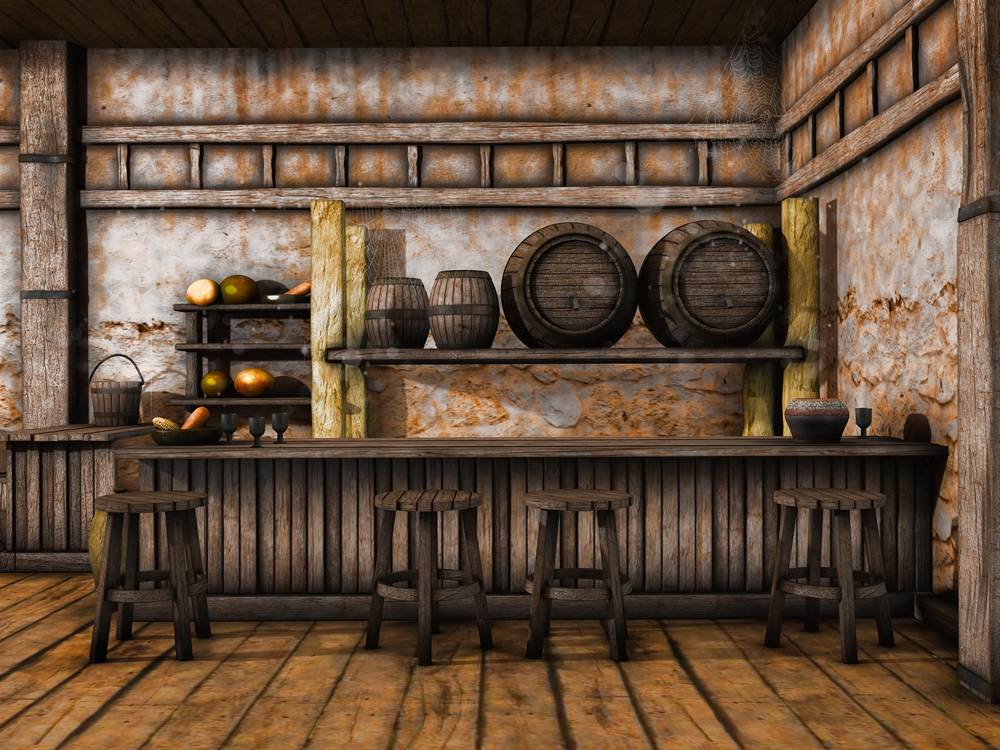
Inn or Tavern: What’s the difference?
These two words are nearly the same meaning for many. But in medieval times an inn was typically a place to find food and shelter. And a tavern often served food and drink but provided no shelter. Sometimes an Inn would have a tavern attached to it or within short walking distance. For purposes of this article a tavern might be stand alone or might be attached to an inn.
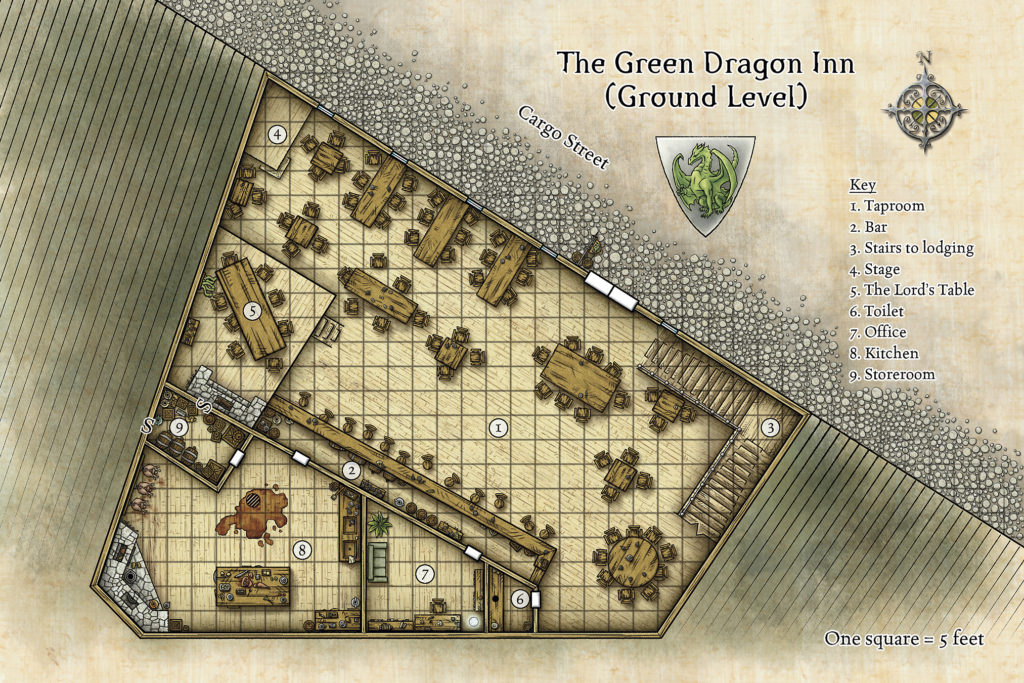
The Layout of Taverns in Dungeons and Dragons
Taverns might be one story or many. This really depends upon the function of it. If it is attached to an Inn it will likely be more than one story. If it is stand alone then it probably will be only one or two stories tall.
A typical tavern might have a bar with stools as well as tables. If bards, or other entertainers, are present then there might be a stage. There might be multiple rooms in a tavern. Or there might be one large common space.
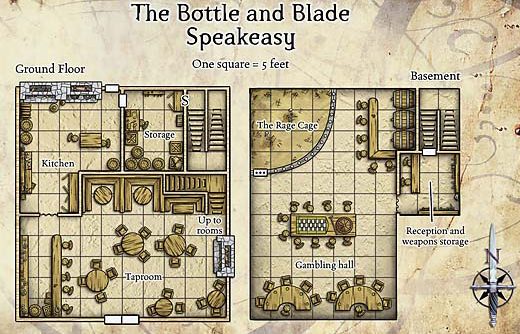
Taverns that serve food will also have a kitchen. There will probably be storage areas for foods that might be served. A cellar for wines or to hold kegs of ale or beer might be present.
The common room is often the center of activity in a tavern. Such rooms are typically very large. Often it will be the largest room in a tavern. Usually a common room will seat up to 60 people. A dimension of 40 feet by 30 feet would be typical. Often a common room is referred to as a “public room.”
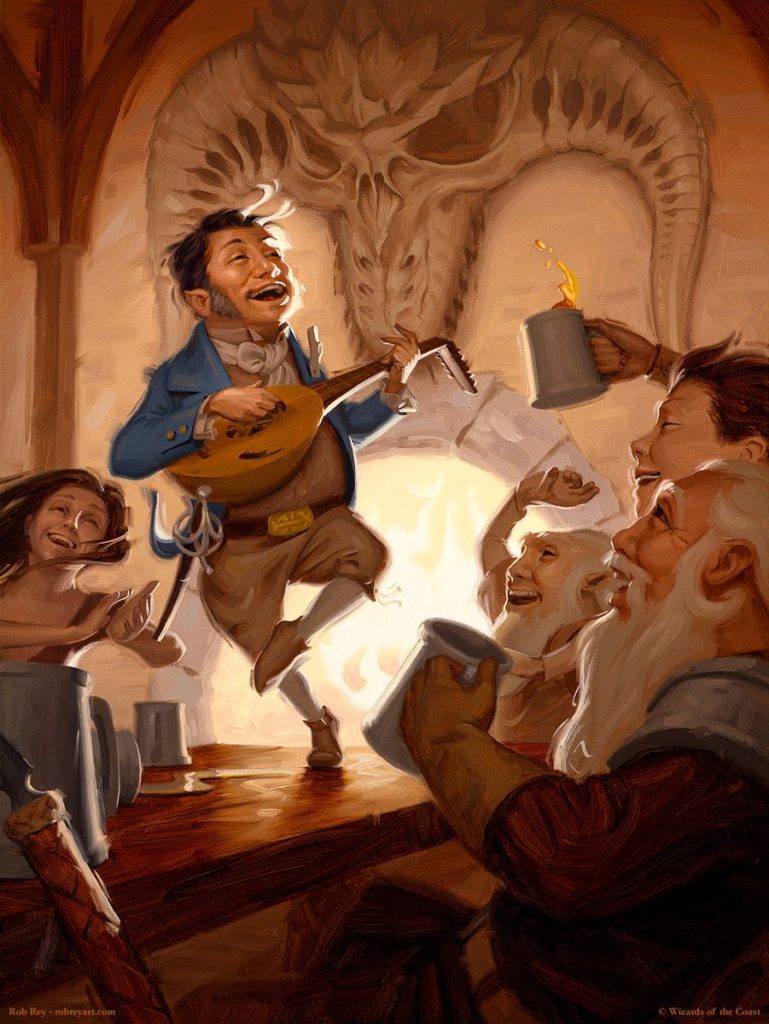
Does this town even have a tavern?
Not every town or village will have a tavern. A small village might not have enough people to keep one in business. Large towns might have many.
There is a reference in an article in the Dragon Magazine, Volume IV, No. 3 entitled Inns and Taverns which gives an interesting perspective on how many taverns one might find in a town or city. According to this article Paris had 5000 inns and taverns in one three mile square part of the city in 1453. There were approximately 150,000 residents living in that same three miles. Five thousand inns and taverns!
There is another interesting piece of medieval history (from the same article above). It has been estimated that the average peasant drank up to 16 pints of ale or beer in a day. While this might seem unlikely consider that water in those days was often polluted. Life was hard. During off hours peasants often drank away their troubles. And the price of alcoholic beverages in those days was extremely low. It was so low, in fact, that in medieval Dublin there was no currency small enough to use when buying it. One instead bought “tallies” or used some form of credit.
Of course…not every tavern has a town! Some taverns might be found on major roads for travelers to stop and get a meal and a drink.
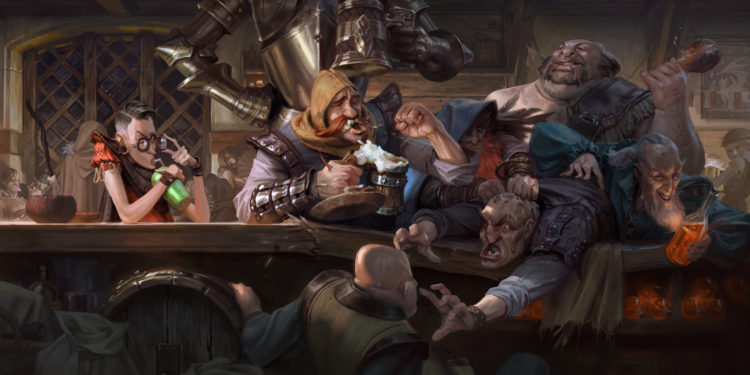
How much does that ale cost?
Going back to the Inns and Taverns article, mentioned previously, here is a list of suggested prices for food and drinks. This article was written in 1979 and was written with OD&D and 1st Edition in mind but these prices might be applicable to any edition.
Drink Prices:
- Wine, Good Quality 15 SP
- Wine, Watered Down 10 SP
- Mead 10 SP
- Ale 3 SP
- Grog 4 SP
- Rum 8 SP
- Beer 8 CP
Food Prices:
- Beavertails 5 SP
- Snake Stew 5 SP
- Rabbit Stew 3 SP
- Wolf Stew 3 SP
- Chicken Eggs 3 CP (each)
- Lizard Steaks 2 GP
- Beef Steaks 10 SP
- Roast Chicken 5 SP
- Roast Duck 8 SP
- Ham 5 SP
- Lobster 2 SP
- Shark 3 GP
- Fried Snake 3 SP
- Frog Legs 1 SP
- Duck Eggs 11 SP
- Eel Steaks 4 GP
- Roast Turkey 3 GP
- Roast Pheasant 5 GP
- Venison 6 SP
- Mutton 4 SP
- Vegetables, Potatoes 3 SP
- Crab 3 GP
- Caviar, Salmon 6 SP
- Whale Blubber 10 GP
- Beef Ribs 8 SP
- Bread 5 CP
Of course…. these are suggested prices. Prices could be lower in a poor village. Or they could be higher in the noble district of the city. But these prices might give a dungeon master a starting point for setting prices. Not all of these items would be found in every tavern. A tavern found in a town with a waterfront is more likely to have various types of seafood on the menu. A town which is land locked for hundreds of miles is not likely to have any seafood on the menu.
Some taverns might even offer exotic foods at greater prices such as:
- Griffon wings
- Manticore steaks
- Dragon ribs
- Kraken tentacles
- Roasted owlbear
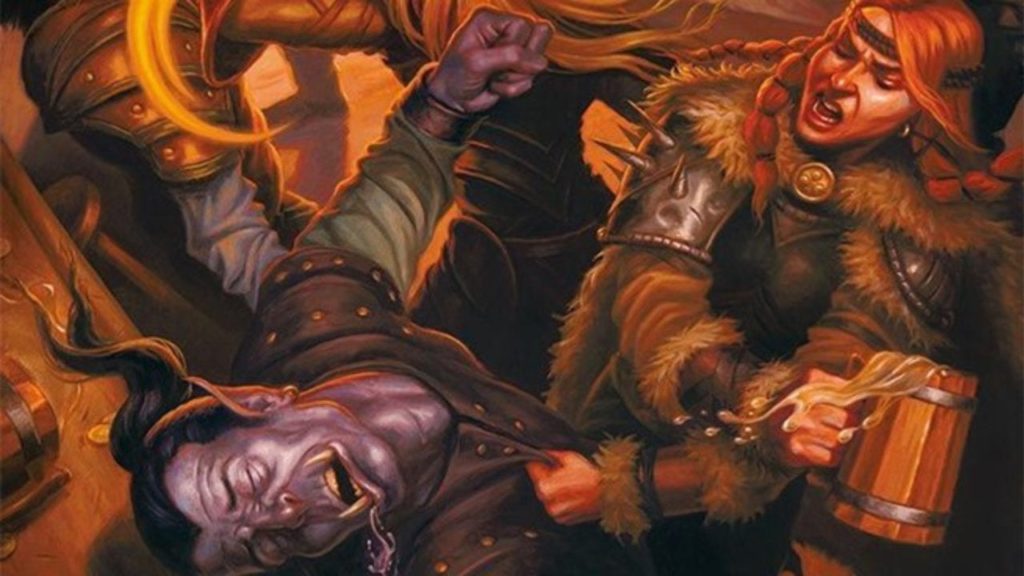
Tavern entertainment
The common room of a tavern is where most of the activity will occur. More than just drinking will go on in such places. Some other possibilities might include:
- Bards singing and telling stories
- Locals gossiping and sharing news
- Songs
- Bar fights
- Drinking games
- Gambling
- Tavern games (see below)
- Actors and plays
- Drunks sleeping it off
- Drunks being thrown out of the tavern
- Pit fighting for sport
- Jugglers
Sometimes tavern patrons might just do their own things while enjoying an ale. Some possibilities might include:
- Whittling
- Sharpening weapons
- Carving on the table
- Smoking
- Talking to one’s self
- Talking to one’s invisible friend in the empty chair at the table
- Feeding a pet bird on their shoulder
- Speaking in thieves cant or alignment languages to prevent others from listening
- Someone spying from the next table
- Dancing
- Desperately looking for someone
- Watching the bar maid with bad intentions
- Arguing with others
- Watching the exits nervously
- Warming at the fire
- Appears to be sleeping but is actually dead
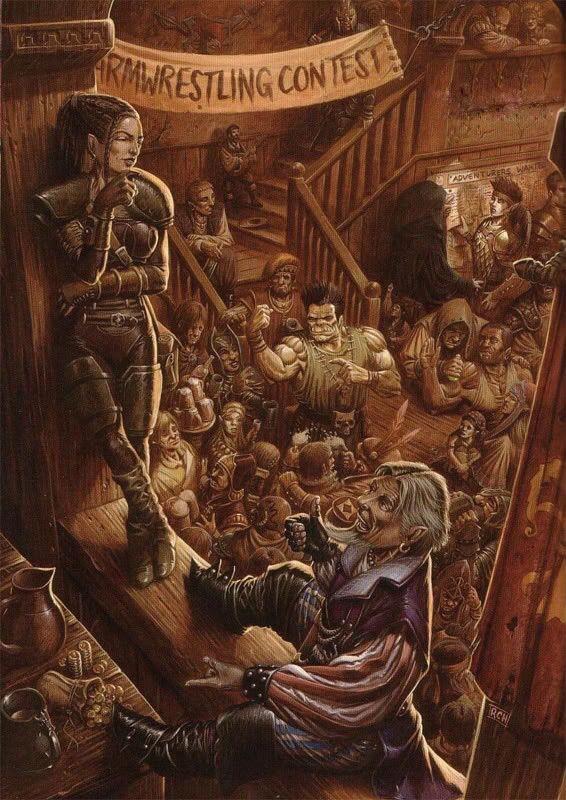
Tavern games
People spent a lot of time in taverns in the middle ages. What else was there for entertainment? So naturally there would be games played by those in the tavern to pass the time. Some possibilities might include:
- Throwing darts
- Throwing daggers
- Gambling
- Drinking games
- Arm Wrestling
- Gnome (or Dwarf) tossing
- In a town with a wizard academy one might even find bar games involving the use of magic!
There is an interesting reference work from 1283 called the “Book of Games.” It lists about a hundred and fifty games which were known at that time. Three specific games are mentioned, however, that are interesting and notable. These are:
- Dice
- Chess
- Backgammon
These games are not mentioned as “tavern games” per se but it is logical that they could be encountered in a tavern. The book was written in Spain and the author traveled to a few towns to compile this work.
It is also notable that cards existed during the early medieval period. But in Europe they were banned in many jurisdictions. This was specifically because cards were linked to gambling. Some of the earliest card games (which were banned) included:
- Sabre
- Coin
- Cup (chalice)
- Cudgel
Often these games were banned and then slightly modified and then renamed. And then they would be banned again. And then cards in total would be banned in order to prevent it from continuing.
For further discussion of medieval pubs and games one might want to look at the following article:
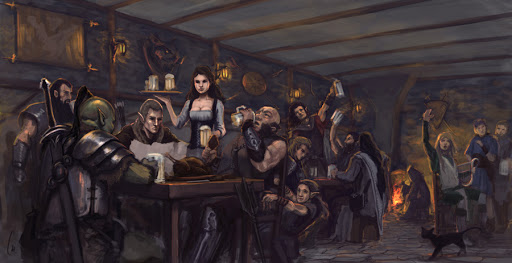
Discrimination in taverns
Not every tavern keeper allows just anyone inside. Some might prefer to exclude certain classes of citizens from using their establishment. Some possibilities include:
- Racial – Dwarves, Elves or Half Orcs might be excluded from a human establishment. Humans might be excluded from a demi-human one. Or perhaps racial enemies might exclude each other. Elves might prefer not to have Dwarves in their pub.
- A noble tavern might want to keep out the lower class
- A thieves tavern might prefer not to have non guild members present
Not every tavern will have such restrictions. Some will. Usually there would be a sign posted.
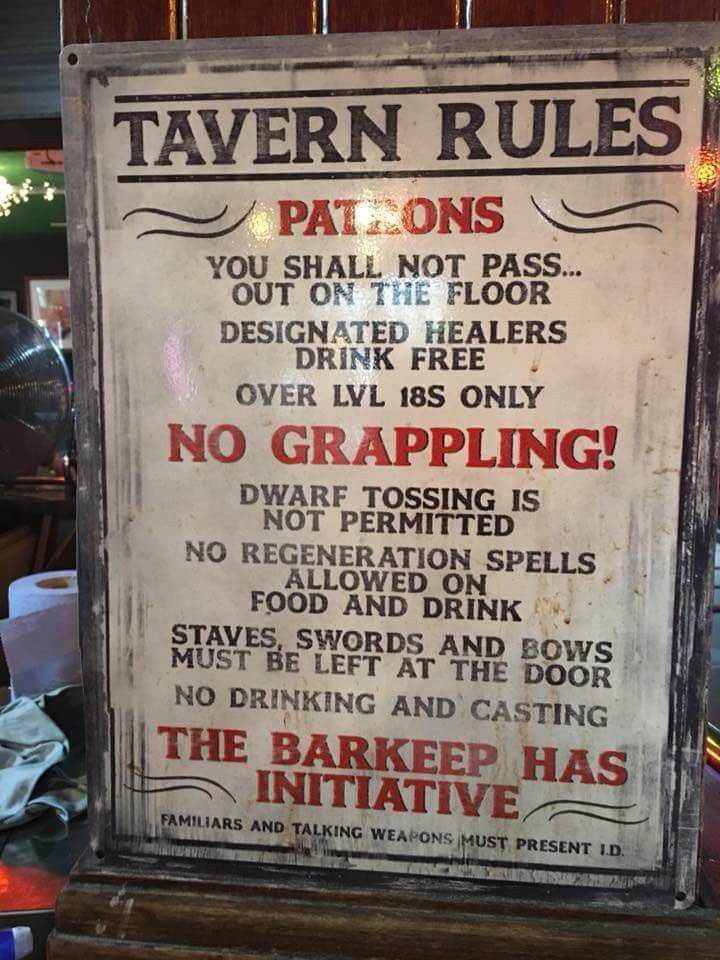
Tavern Signs
The sign outside of a the tavern will often have a picture of a tankard of ale or beer. Signs are the only real form of advertising that one is likely to have. But a tavern is highly likely to be well marked with a sign so that even travelers passing through can find it easily.
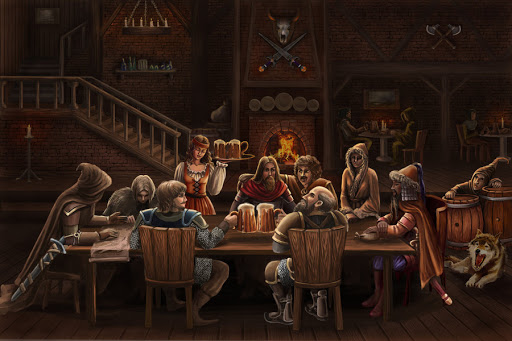
Other things sometimes happen in taverns……
Sometimes people get hurt or die in a tavern. Sometimes illegal activities happen there. Unsavory people have a tendency to hang out in such places. Some possibilities that one might consider:
- The messenger who arrives to summon the adventurer and dies gasping on the table with a dagger in his back
- The guy on the next bar stool who dies suddenly from the poison in his drink (which the shapely bar maid slipped in while no one was looking)
- Brawls
- Unsavory deals are sometimes made in taverns
- Blackmail might be paid (or might be set up) in a tavern
- Harlots might meet their customers in one
- Pirates and bandits visit towns from time to time….and where would they go but the local tavern?
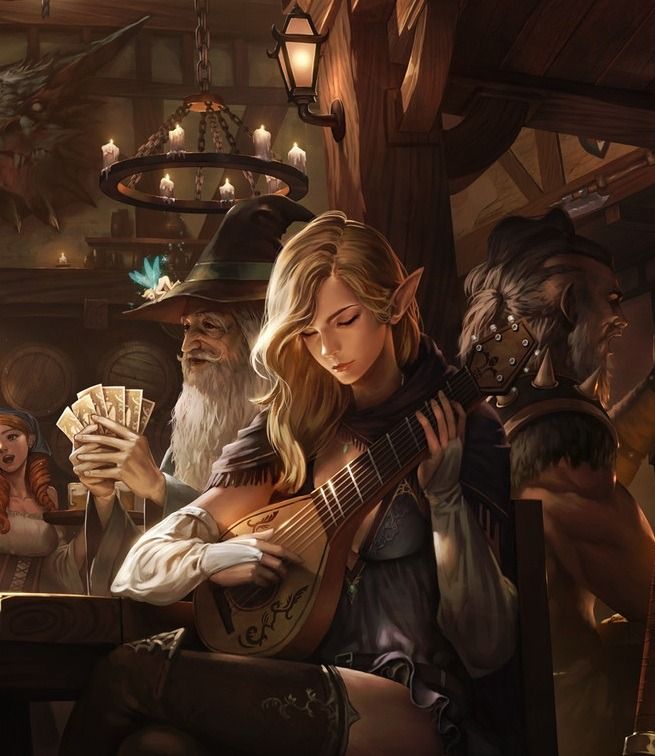
Rumors
Taverns are places in which adventurers often look for rumors. But not everyone in a tavern tells the truth. Sometimes they are just boasting. Sometimes they are outright lying. And sometimes the rumors are pure gold. The bar tender and bar maids are often the best sources of information. But the salty old guy on the fifth bar stool may know the location of that Dwarven gold mine you were looking for. He might even have a map to it for the right price……
Some possible rumors that one might hear in a tavern:
- Local legends
- Crime and punishment
- Nasty gossip about local towns people
- Stories about great historical figures and heroes
- Stories about great treasures that were lost long ago
- Stories about legendary villains that once plagued the land
- Stories about magic and wizards (keep in mind that magic is fairly rare in most campaigns. Most villagers and townspeople will never have seen magic or a wizard)
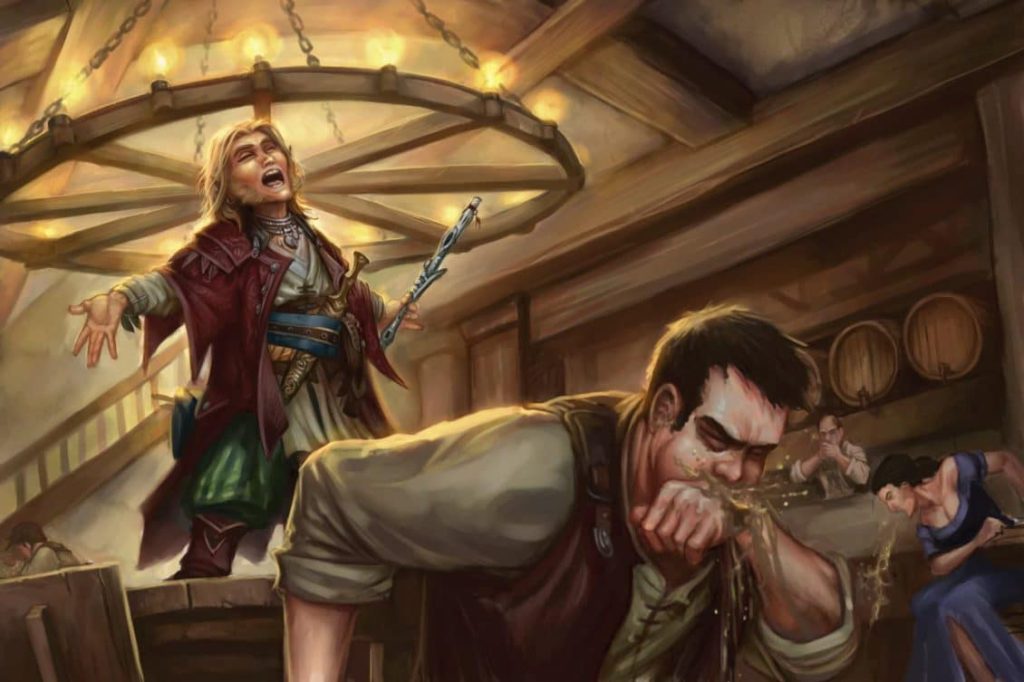
Who would one find in a tavern?
One of my own methods, as a dungeon master, is to make a list of NPCs for the town. This list will have statistics, alignments, gear, etc along with a short back story for the NPC. And then I will assign some of these as possible NPCs that the players might find in the tavern on a given night. Obviously every NPC will not be in the tavern every night. But some will be there nightly. Some possible tavern dwellers might include:
- Spies
- Assassins
- Bandits
- Brigands
- Pirates
- City guardsmen
- City watchmen
- Local soldiers
- Adventurers
- Thieves
- Farmers
- Peasants
- Tradesmen
- Harlots
- Bar Maids and Wenches
- Bards and minstrels
- Actors and mimes
- Travelers
- Colorful characters of all types
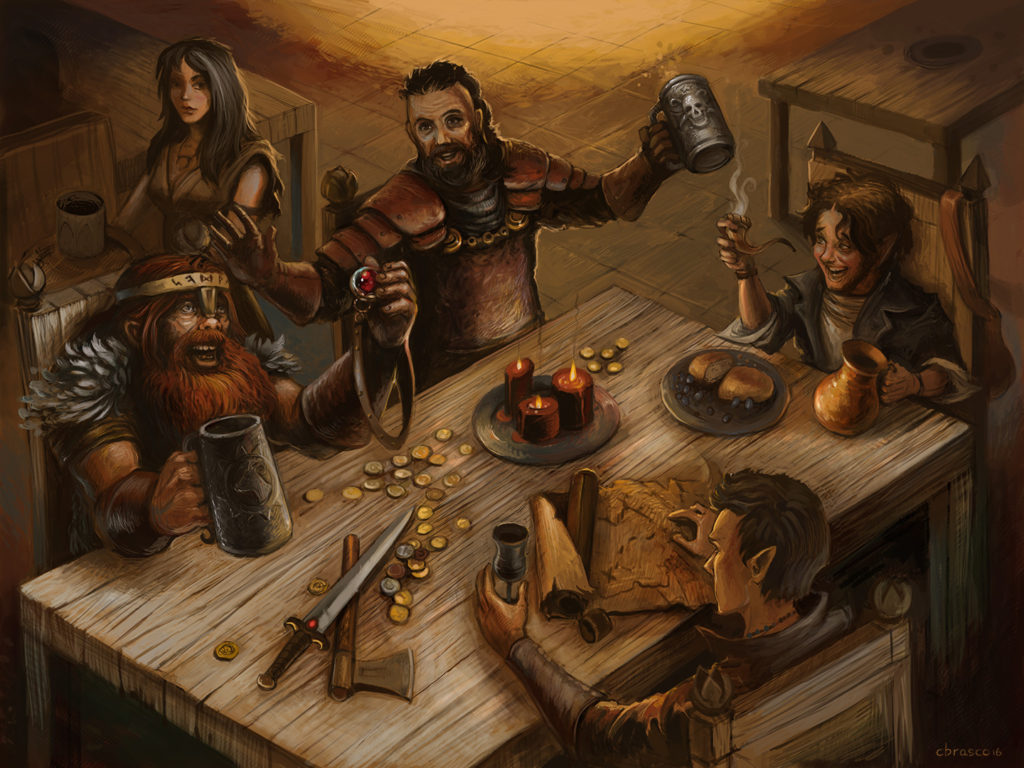
Other interesting things one might find in a tavern
In addition to interesting people one might find other things in a tavern which could lead to adventure:
- A strange marking on the bar or on a bar stool
- A message or note which is abandoned or lost on the floor
- A scrap of a treasure map left on a table or scratched into the underside of it
- A wanted poster for an infamous bandit who happens to be sitting on the next bar stool…..
- A strange gold coin with a peculiar rune on it or marking
- An ancient platinum coin with the face of some long dead emperor or conqueror. Where did this coin come from? Are there more like this somewhere nearby?
- A magical dagger which seems to be winning all the bar games….
- Job offers for guards, caravans or even the city watch
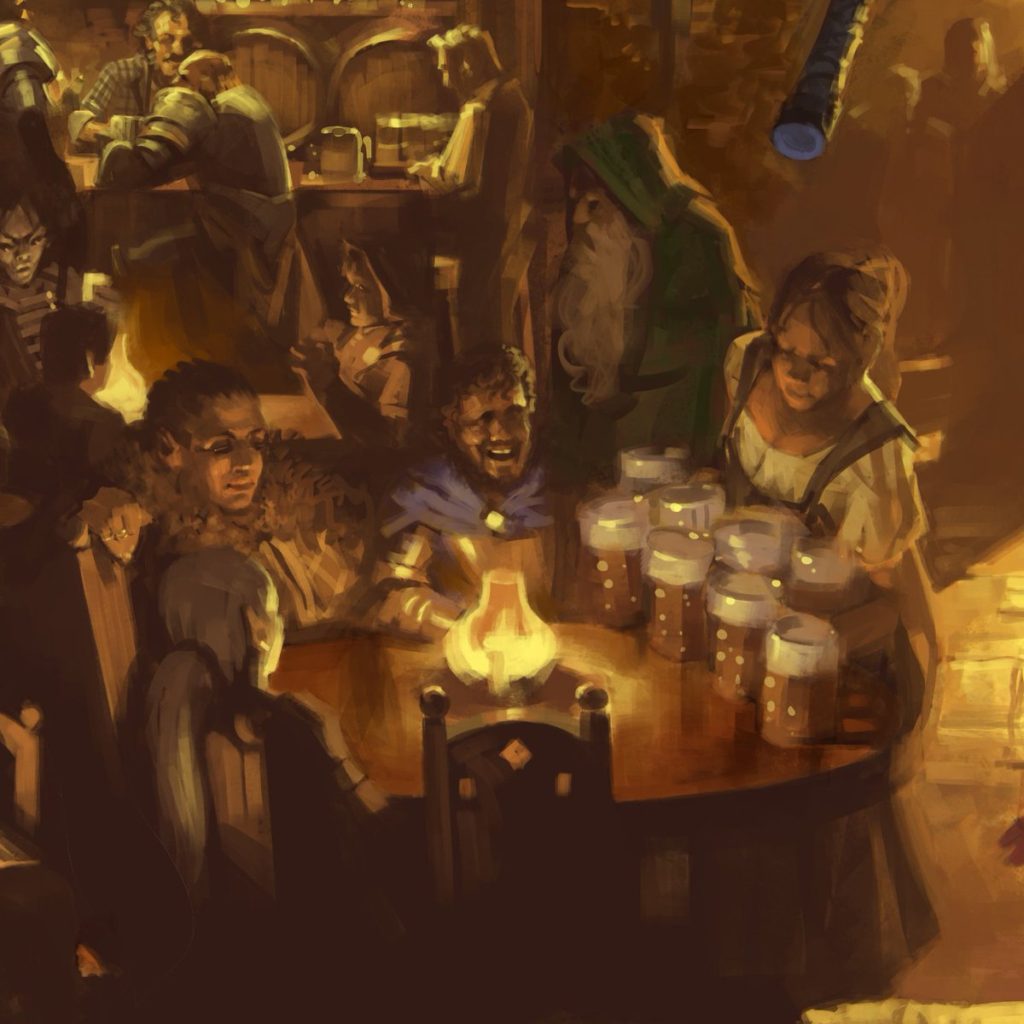
Taverns are there for players to role play
Not every tavern has to have extensive detail. But the more time which the players spend in a tavern calls for more attention to the detail needed for it. A tavern filled with colorful characters can be a role playing gold mine. The players might spend a great deal of time there. And they will keep going back if the tavern is well made.
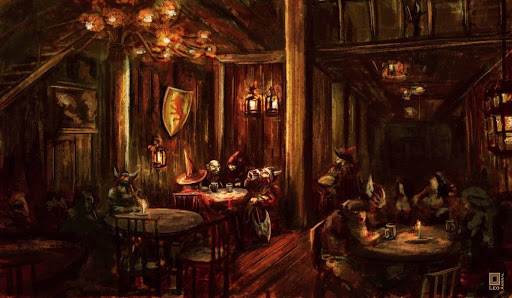
If you enjoyed this article then perhaps you will enjoy these:
- City of Brass
- Sphere of Annihilation
- Underwater Adventures
- Dungeon Building: Pillars, Pools, Fountains, Statues and Altars
- Dungeon Building: Entrances, Stairs, Passages and Secret Doors
- Dungeon Building: Air, Light, Food and Water
- Locks
- Demogorgon
- Who were those spells named after in Dungeons and Dragons?



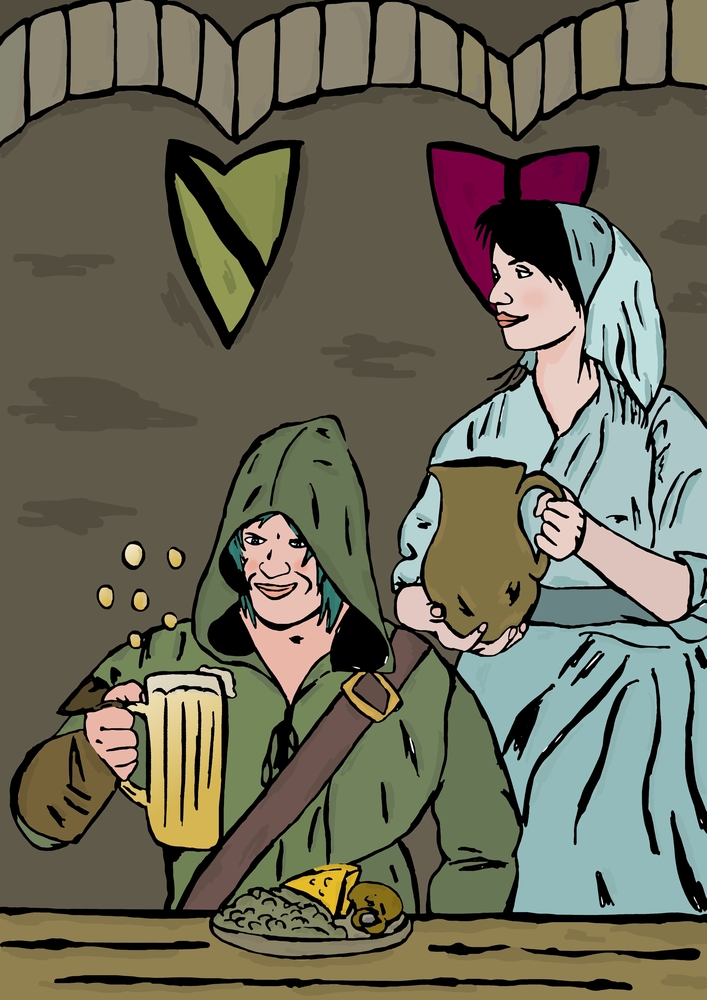
This is wonderful. Great job. Its like a little revisit of the classic Dragon magazine.
Thanks!